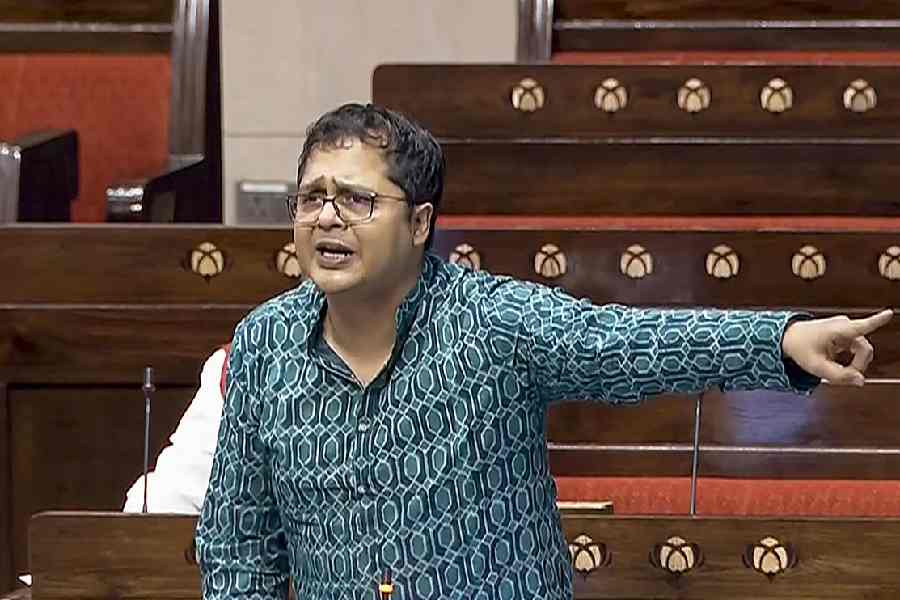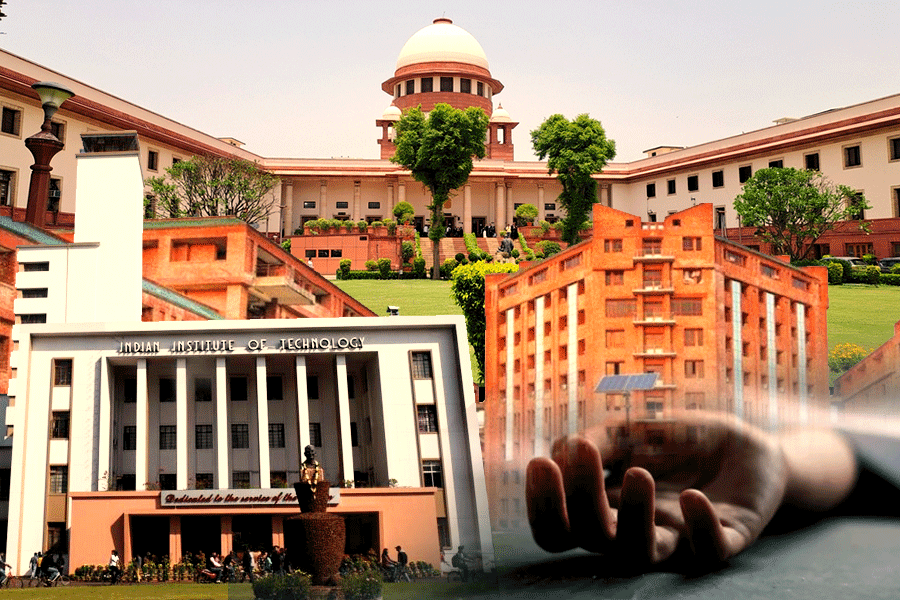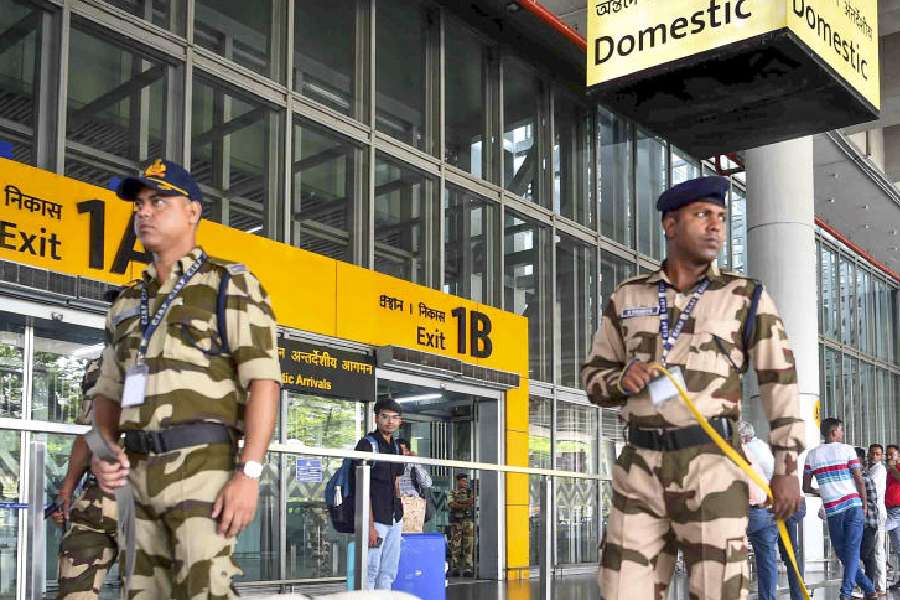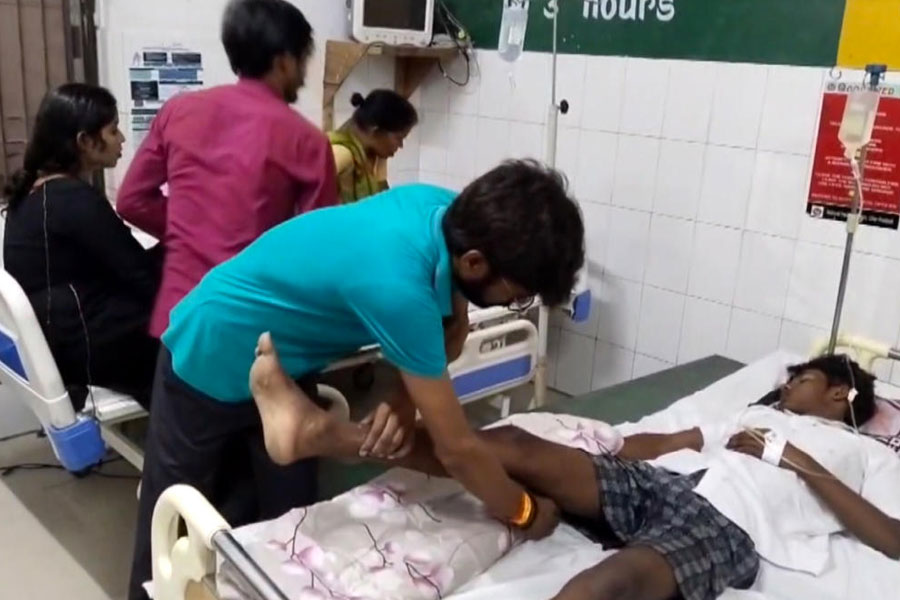


Bhavesh Sheth and Sanjay Shah are flipping through the 200-page Sharadiya or Durga Puja issue of Halchal - short for Mahanagar Calcutta Halchal, a weekly magazine. "We have carried a profile of Kadambini Ganguly, the first woman graduate of India, a short story by Satyajit Ray," says Sheth. Shah brings up another page, the piece is titled "Agley Janam Mohe Bangali Hi Kijo". It talks about the state's plenty in terms of the arts and aesthetics, food and literature. Most of the pieces are translations of articles that have appeared elsewhere in Bengali - permissions in place. But there are some commissioned ones as well. And all of this is in Gujarati.
Hyperlocal vernacular publications exist. They serve the purpose of taping together a diasporic people. Keep the language alive too. The content is mostly notices - births, deaths, marriages, achievements, a Hindu calendar with the major community festivals in bold. And there are the listings - restaurants, retailers, tailors... Halchal does most of these, but its principal impulse and effort has been to disseminate among generations of Gujaratis the culture of their adoptive land.
Messrs Sheth and Shah started the magazine when they were still in college. It has been three decades since.
"They say the East and West can never meet, but there is a cultural connection between Bengal and Gujarat," says Shah. In the 1950s-60s, a lot of Gujaratis went to Santiniketan to study art and literature. There was another wave in the late 1970s when Uma Shankar Joshi was the chancellor of Visva-Bharati University. Also, Rangoon was an industrial hub in those years and a lot of Gujaratis would go there for their business; Calcutta, geo-strategically speaking, was a convenient place to settle down.
Sheth talks about how the Gujarati community in Calcutta has always been intrigued and influenced by Tagore, Saratchandra, Netaji, Vivekananda... "We have been brought up in an environment where we have heard Pannalal Ghosh's bansuri, Rabindrasangeet, Mahalaya chants... It became a part of our upbringing; everything except Bengali food," he adds with a laugh. Sheth and Shah use the possessive case in the plural, but one is left wondering if the "we" and the "our" can actually be extended to include an entire community.
Ami Dave is a third-year student of a city college. She has grown up seeing Halchal lying around the home. Her parents read it, her grandparents pore over it. She too picks it up time and again, for the new elements, four pages of puzzles and jokes and reviews - all in English. "I get my mother to read me the film reviews that are in Gujarati," she says.
Shah and Sheth are, of course, steadfast in their claim that Halchal has an appeal across generations. That is why they have kept up the core philosophy and innovated around it.
On the occasion of Tagore's 150th birth anniversary, they brought out a special edition. It had a selection of Rabindrasangeet, in Gujarati of course. "If Gujaratis are earning money in this place [Bengal], they should know all about the place too," says Sheth.
They tell you how they have taken pains to know better the geography, travelling from Jamshedpur to Balasore, Rourkela, Kharagpur, Burdwan... In every city, they tried to locate a Gujarati Samaj and seek details of the Gujarati diaspora there. "We would keep an eye out for eateries with names like Ma Ambe Farsan or Jalaram Sweets, which just sound so Gujarati, to learn more about their regular customers," says Shah. In 1997, they even published a directory of all the Gujarati-speaking people of Calcutta, right from Jains to Parsis, Bohras to Khojas. It had more than 700 pages and every single Gujarati-speaking person made it to the list.
Halchal's only competition for the longest time was Chitralekha, a Gujarati magazine published out of Mumbai. It didn't have the culture connect though. And as the Gujarati dailies Bombay Samachar and Janmabhumi Pravasi stopped finding their way to Calcutta, the weekly picked up more readers.
In the 1970s, when the Naxal movement was on in full swing, a section of Gujaratis shifted base from Calcutta to Mumbai. Halchal eventually started a Mumbai edition for them. At some point, a southern offering called Dakshin Darshan was born. Across editions, the cultural core, the Bengal quotient remained, still does.
Although Gujarat today is synonymous with Narendra Modi, the editors and publishers of Halchal claim they have never tried to curry favour with the Modi-Amit Shah camp. Says Sheth, "We always wanted it to be a social literary endeavour and never a political thing."










